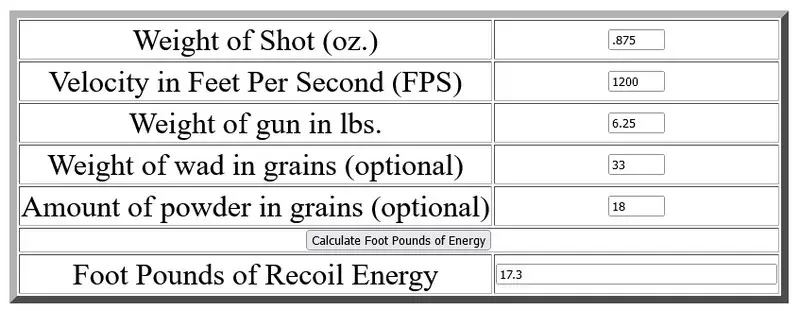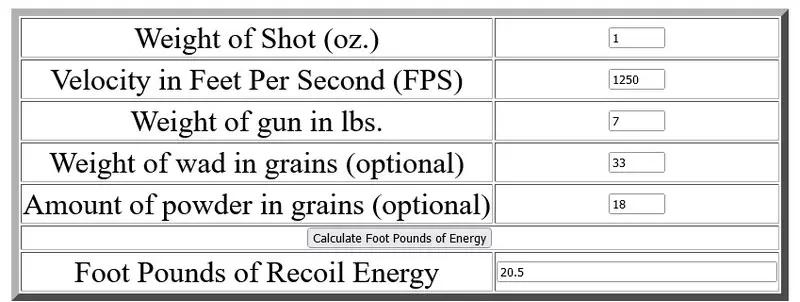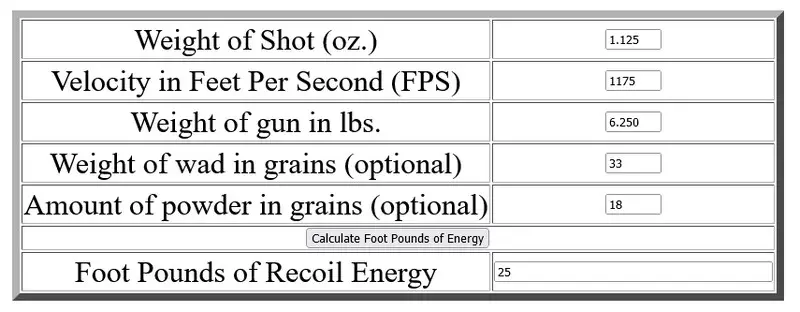|
Does a 20 Gauge Kick Less than a 12 Gauge?
 If we are looking at standard field gun weights coupled with common target loads, the answer is clear. For starters, let's look at a 6-1/4 lb. 20 gauge firing 7/8 oz. 1200 fps loads.  Next
up, a 7 lb. 12 gauge using the common 1-1/8 oz. 1200 fps
target load.
 Finally, a 7 lb. 12 gauge
using a 1 oz. 1250 fps target load.

The 7 lb. 12 gauge has
about 34.7 percent more recoil than the 6-1/4 lb. 20
gauge when using 1-1/8 oz. loads. and still has about 18.5
percent more recoil when using 1 oz. 1250 fps load in
the heavier 12 gauge.  Switching
over to my favorite 20 gauge dove load, 1 oz. Winchester AA
1165 fps shown above, the result is 20.3 ft. lbs.: ever so
slightly less than our 7 lb. 12 gauge using the 1250 fps 1 oz.
load. Let's
go pheasant hunting with Remington Nitro Mag 1-1/8 oz. 1175
fps loads out of our 6-1/4 lb. pound twenty gauge.  To finish, we look at a popular 1400 fps 1-1/4 oz. 12 gauge load out of our 7 lb. 12 gauge. 
It
does
depend, of course, but as a broad generalization with common
target loads (take, for example, what is allowed in
American Skeet), 20 gauges do kick markedly less than 12
gauges. While I used 6-1/4 lbs. as the 20 gauge weight, there
are certainly much heavier examples, the same goes for 12
gauges. The most popular 20 gauge factory load is 7/8 oz. 1200
fps, the most popular 12 gauge factory load there is, is 1-1/8
oz. 1200 fps. Those are the most popular, most used, and
therefore the most available loads in the U.S. I cannot
remember a time when I didn't have a few cases of each on
hand. This
extends to the most common pheasant loads, for the classic
1185 fps 1-1/4 oz. 20 gauge load develops about 30.2 fpe when
shot out of a 6-1/4 lb. gun. Using the common 1400 fps 1-1/4
oz. 12 gauge pheasant load from a 7 lb. gun develops 36.4 fpe:
20% more recoil. To bring the 12 gauge load down to the
20 gauge levels of 30 fpe takes a 8-1/2 lb. 12 gauge shotgun.
|